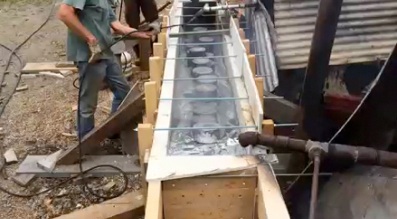
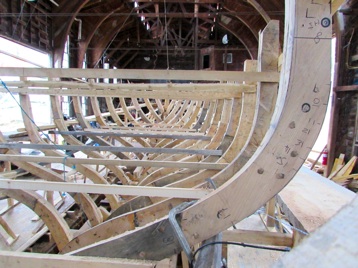
60’ David Westergard Schooner
Master schooner builder, David Westergard, wanted the half-model of a 60-footer he’s building converted to lines and construction plans, and to have the bumps smoothed-out in the process. After a few revisions we settled on a really sweet shape and construction is going full-tilt in the historic Smith & Rhuland Building in Lunenburg, Nova Scotia, Canada. It was here that Bluenose I and II, HMS Bounty, and many other fine sailing craft were built. Also traditionally built and of excellent materials, this boat will be gracing the Atlantic in 2015 for the Blue Dream Project, led by Francesco Nanni, of Rome. Updates on the project may be seen on their website.
Work completed for David and Francesco included hull fairing and analysis, lines and construction plans, full-size mylar construction stations, stem, backbone, and curved transom patterns, and the lead keel plan. These plans have saved David and his crew several weeks of work while helping to develop a fair, fast, and seaworthy hull shape.
Specifications
LOD
LWL
Beam
Draft
Displacement
D/L
Sail Area
Power
59’-3”
48’-2”
15’-7”
8’-2”
72,400 lbs
289
TBD
Diesel hp TBD
18.06m
14.68m
4.75m
2.49m
32.84t
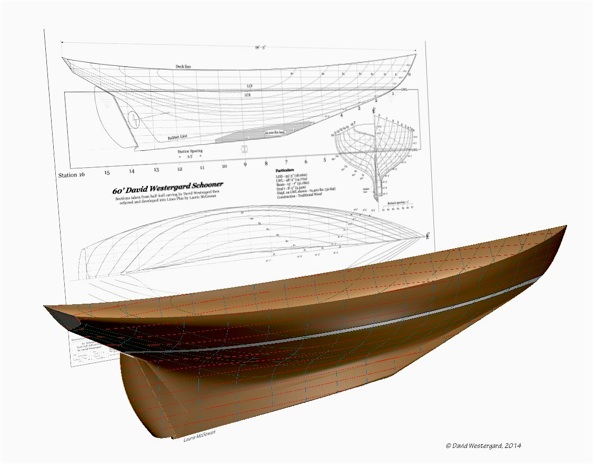
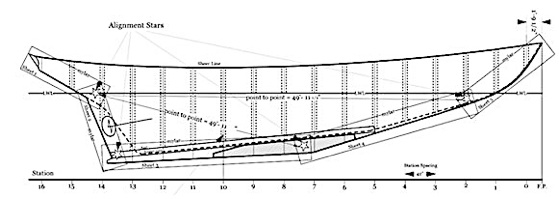
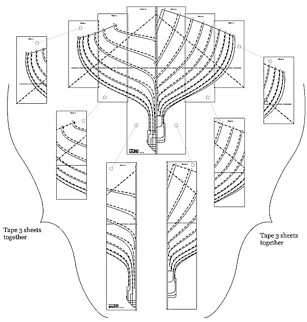
Full-size Mylar Patterns - sections to inside of planking and have bevels marked
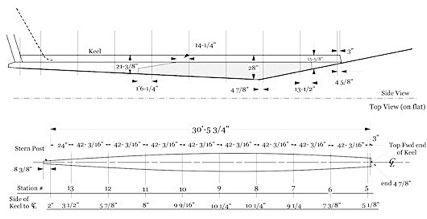
Keel Pattern
Here’s how to pour a lead keel! The wooden keel was cut to the pattern then flipped-over and a sheetrock-lined pour box was built on top of it. A few keel bolts in the middle were installed and extended up through the keel into the pour area. The pour took all of 10 minutes! Once cooled the keel (with lead) was flipped over, bolts were backed off, the sheetrock was blown out with compressed air and the bolts were retightened. The remaining keel bolt holes were then drilled. Seems easy but David assures me the pour is still very stressful... and don’t breathe the fumes!
Lead Pour Movie


Copyright 2001-2021 inclusive McGowan Marine Design, Inc.
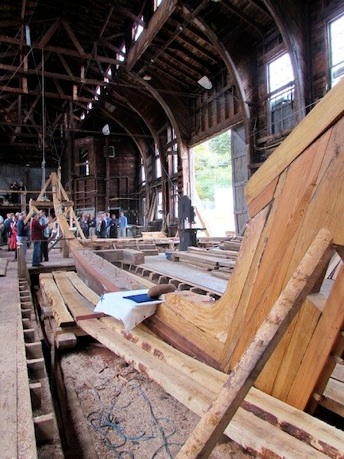

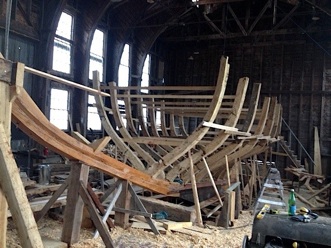
Backbone and Frames
Bevels were marked on the frame patterns so their cutting on a big ship’s saw saved a lot of fairing time.



Frames all up. Francesco seen on right, with David in picture below.
Note the bevel markings on the sawn frame on right: two men fed the frames through the saw while one controlled the table bevel. This saved a lot of trimming on the shop floor.

